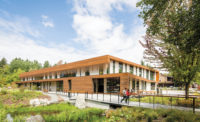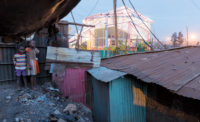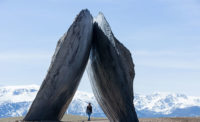When a local mayor asked Costa Rican architect Álvaro Rojas to build a community center for the small village of El Rodeo, about ten miles west of San Jose, Rojas quickly understood that the commission would be a tall order despite the small size of the proposed project—about 8,000 square feet, in a town of around six hundred. For one thing, community centers in Costa Rica serve a wide variety of functions, as classrooms, recreational spaces, and forums for political and civic gatherings. This facility would also be adjacent to a soccer field and have to provide changing rooms and a kitchen to serve players and spectators. Furthermore, Rojas and his team would have to pull all this off with a budget of just $185,000—“less than a third of the budget typically required,” says the architect. “So the financial reality of the project was a major point of decision in how to approach the design.”
In response, Rojas and his wife and partner, architect Sylvia Fournier, have designed a facility that not only maximizes efficiency and provides a flexible, functional space, but also one that gives the people of El Rodeo a unique and compelling place to gather. The circular form of the main building underscores its role as a unifying, democratic place for meetings and social events, and the layered roof structure yields a soaring interior while making a bold pronouncement in the landscape.
The multipaneled roof, which is structurally independent of the volume, flies above the building on steel trusses and beams supported on slender concrete columns, lightening the load on the drum to help make it seismically sound. Corrugated fiber-cement roof panels mimic the steel roofs of many Costa Rican buildings. They also provide thermo-acoustic insulation, preventing the interior from overheating and muting the sound of the region’s heavy rains. In order to reduce the amount of concrete needed for the drum, while also facilitating cross ventilation, the architects used locally fabricated masonry to fill in most of the walls with open brickwork. An ancillary building, rectilinear and made of concrete, holds restrooms and a kitchen. Much of it is clad in mosaics of broken tiles donated by a local distributor, another way the team kept costs down while bringing a rich texture to the surfaces.
The Community Center of El Rodeo, which opened in January of 2015, is already used during soccer games and other sporting events, as well as by a local university for classes and recreation. But the building is also equipped to provide shelter for up to a hundred people in the event of a natural disaster. Living up to its charge of meeting a wide range of needs, Rojas and Fournier have conceived a building that will serve the community during times both of challenge and celebration.











Post a comment to this article
Report Abusive Comment